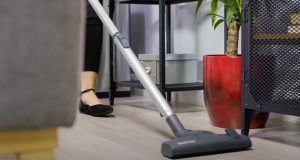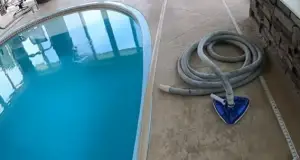On a bright afternoon, you’re lounging on the sofa, engrossed in an enjoyable read while sipping on some detox water. All is well until disaster strikes – your cup overturns spilling its contents, leaving the floor drenched. The moment of bliss is instantly gone. Naturally, your next move is to reach for the paper towels, bucket, or mop to tackle the water spill. Perhaps you’re in search of a quicker method to deal with this mess.
Vacuum cleaners are great tools for mess clean-up. If you’re going to suck up the water right now or next time. How about vacuuming up the water, then? Below you’ll find an answer that works.
Is It Possible To Vacuum Water
It’s a no. Water cannot be vacuumed. The majority of you have at least one vacuum cleaner at home. It is important to know that not all vacuum cleaners can remove water from a floor after a spill.
Normal vacuum cleaners cannot remove liquids like water. You could electrocute yourself or seriously damage your vacuum cleaner if you run it over a puddle of water. No matter what happens, you’ll have a mess on your hands when it comes to emptying the dustbin or bag.
What Is The Problem With Vacuuming Water
In most vacuum cleaners, trash and debris are collected with reusable trays or collection bags.
Vacuum bags should only be used for dry waste. They’re designed to pick up hair, dirt, dust, debris, and even small things like crumbs or glass. The vacuum cleaners will show a warning light when the bag is full. To keep cleaning, you’ll have to empty the bag. A vacuum cleaner with a bag works well to hold hair, dirt, and other messes, but not water.
Vacuums are mechanical and electrical at the same time. The suction comes from a motor powered by electricity. It’s no secret that water is an enemy of electricity. When water gets inside a vacuum, it damages all these functions, breaks down components, and destroys mechanical systems. Electricity and water are bad together. The consequences could be disastrous.
Unfortunately, the same problem exists with vacuum cleaners with removable trays. Vacuum trays are also not designed to hold water. Rather than getting into the vacuum motor, the water may wreak havoc on it.
In general, you shouldn’t use a vacuum for cleaning water because it’s unsafe. If the water gets into the motor, you can get a shock because of the electric risk. A few drops of water could result in serious injury or death. Just don’t use the vacuum to clean water!
Which Are The Best Vacuums For Water
Despite the fact that not all vacuums can vacuum water, there are still some that can do it. Wet-Dry Vacuums, also known as shop vacuums, are designed for water cleaning. They are always available on the market. Shop vacuums do it better than traditional units. They are built to withstand water damage. Wet-dry vacuums are just a little bit more expensive, but they work better.
The wet-dry vacuums, known as shop vacs, are designed to pick up liquids like water without harming you or the machine. They can serve you well when you need to clean up spills or puddles in an emergency setting. However, never use a normal vacuum for this.
You might have seen wet-dry vacuums around garages or workshops with big, round tub-shaped vacuum cleaners. The purpose of their job is to clean up spills, but they can also remove dirt, dust, and other stuff.
Originally, these wet-dry vacuums were made for industrial use, not for home cleaning. Still, you can use them in your house if you’re a smart user.
Vacuuming Water With A Wet Dry Method
First things first, you have to take out the filter of the wet-dry vacuum before you can vacuum up anything. Then, different types of vacuums have different attachment hoses for different messes, so pick one that’s right for you and attach it to your vacuum. Now that everything is in its place, vacuum up any spills.
Keep an eye on the vacuum tanks to make sure they don’t become overfilled. There is a red light that lights up for a warning if the tank is too full, although power isn’t always available. To keep cleaning, you’ll have to empty the tank and restart the power right away.
Conclusion
In this article, you’ve already learned you can’t use a vacuum for spills with most vacuum cleaners. Get the job done safely by using a wet-dry vacuum. If you’re interested, a wet-dry vac could be a great investment!




